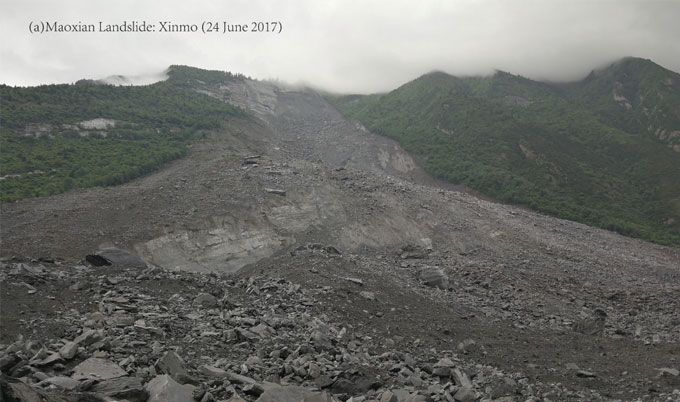Maoxian Landslides
Can satellites be used as an early warning system for landslides?
Published on: 3 July 2017
Researchers are working hard to use satellite data to accurately map the movement of the earth before a landslide in a bid to develop a life-saving early warning system.
The team from Newcastle University (UK), Chengdu University of Technology, Tongji University, China Academy of Space Technology and Wuhan University (China) have been tracking the devastating events of last week when a massive landslide struck Xinmo Village, Maoxian County, Sichuan Province in China.
Triggered by heavy rain, the Maoxian landslide swept away homes in Xinmo village, blocking a 2km section of river and burying 1,600 meters of road. The collapsed rubble was estimated to be about eight million cubic meters.
Three days later, a second landslide hit Xinmo Village and almost at the same time, a third landslide occurred in Shidaguan Town, 20km away from Xinmo Village.
Using ESA’s Sentinel-1 satellite radar mission - which comprises a constellation of two polar-orbiting satellites, operating day and night in all-weather conditions - the research team were able to capture before and after images of the landslides.
This provides vital information about the extent of the disaster which can be used to assess the damage and future risk in the area.

Detecting and mapping active landslides
Professor Zhenhong Li, Professor of Imaging Geodesy at Newcastle University, explains:
“It is still hard, if not impossible, to detect a landslide using traditional techniques, especially in mountain areas. Using the satellite radar data, we were able to efficiently detect and map the active landslide over a wide region, identifying the source of the landslide and also its boundaries.
“Going forward, we can use this information to set up real-time monitoring systems - such as GPS, Beidou and Galileo - for those sites and whenever we detect abnormal behaviour, the system can send out an early warning message.
“In fact, while we were monitoring the Maoxian landslides we managed to identify over 10 other active landslides in the same region and forwarded this information to the relevant agencies.”
Living with the constant threat of a landslide
Sichuan province is prone to earthquakes, including the devastating Great Wenchuan Earthquake of 2008 when a 7.9 magnitude quake hit the area, killing over 70,000 people.
Professor Li says their data suggests the Maoxian (Shidaguan) landslide had been sliding for at least six months before it failed.
“When you consider this sort of timescale it suggests that a landslide Early Warning System is not only possible but would also be extremely effective,” says Professor Li.
“If we can detect movement at a very early stage then in many cases it is likely we would have time put systems in place to save lives.”
Professor Li and the team have been working on active faults and landslides in Southwest China for over ten years and have identified several active landslides in the area south to Maoxian County but this is the first time they have studied the Maoxian region.
Ultimately, the team hope to use the technology to detect and map active landslides in the whole region of SW China, and then build a landslide database.
The research findings were presented at the Dragon-4 symposium in Copenhagen on 27 June 2017.



